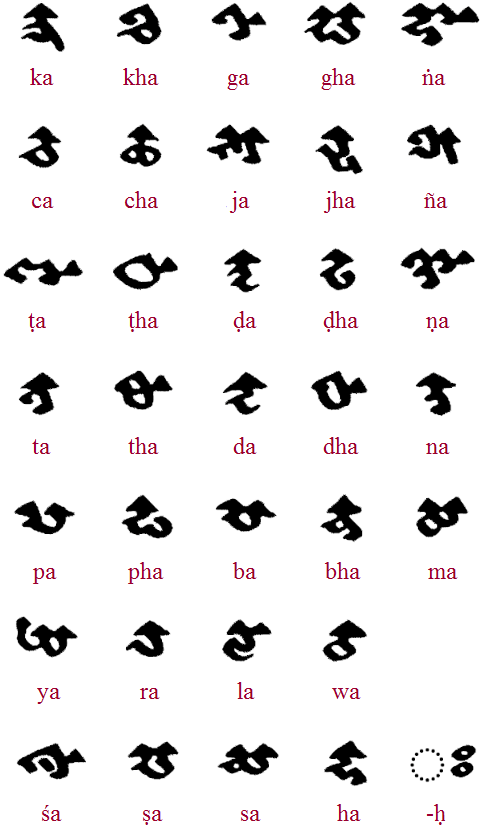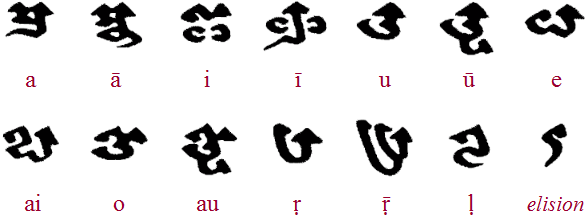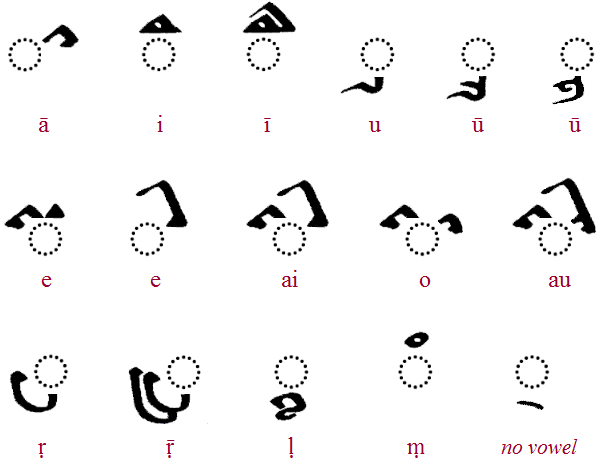The rarely seen Bhaikṣukī (or Bhaikshuki) script was used in Odantapuri, North India, to write Buddhist texts around 11th–12th century AD. It is clearly Brahmic, and has a calligraphic charm coming from the use of a thick nibbed pen, with distinct “arrowheads” upon many letters. Indirect source for this information is Anshuman Pandey’s Unicode proposal. At this stage I am just presenting the manuscript letters; later I shall develop a font and/or revision based on the essentials of this script.
Consonants
There is an inherent /a/ in unmarked consonants. Some letters have the triangular head off to one side, some have two. This is where the upper diacritic vowels will form attachments (see below).
Vowels
These are the stand-alone letters for initial vowels. The Sanskrit texts would usually afford a long vocalic /l/, but no glyph for that has yet been confirmed. The elision marker avagraha shows where an initial vowel has been absorbed by a preceding final vowel.
Next are the forms for vowels attaching to their consonant, some of them replacing the consonant letter’s triangular arrowhead, or altering the top part of the consonant slightly. Some vowels have two forms, depending on the shape of their consonant. The attachment method is similar to that in Pallava. The vowel nasalizer anusvara hovers above, and the vowel-killer virama hovers below.



